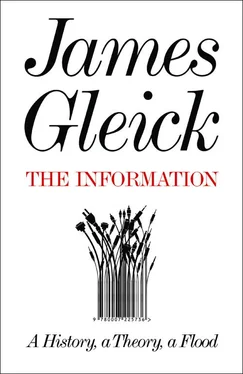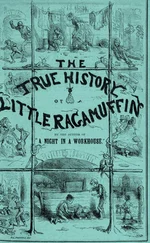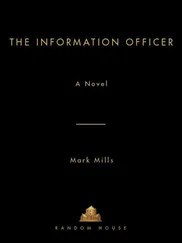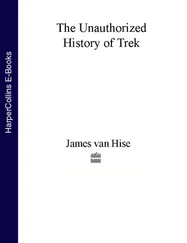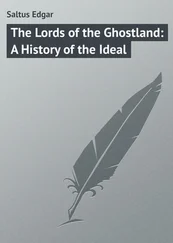1 ...6 7 8 10 11 12 ...33 The writing system at the opposite extreme took the longest to emerge: the alphabet, one symbol for one minimal sound. The alphabet is the most reductive, the most subversive of all scripts.
In all the languages of earth there is only one word for alphabet ( alfabet , alfabeto , , ). The alphabet was invented only once. All known alphabets, used today or found buried on tablets and stone, descend from the same original ancestor, which arose near the eastern littoral of the Mediterranean Sea, sometime not much before 1500 BCE, in a region that became a politically unstable crossroads of culture, covering Palestine, Phoenicia, and Assyria. To the east lay the great civilization of Mesopotamia, with its cuneiform script already a millennium old; down the shoreline to the southwest lay Egypt, where hieroglyphics developed simultaneously and independently. Traders traveled, too, from Cyprus and Crete, bringing their own incompatible systems. With glyphs from Minoan, Hittite, and Anatolian, it made for a symbolic stew. The ruling priestly classes were invested in their writing systems. Whoever owned the scripts owned the laws and the rites. But self-preservation had to compete with the desire for rapid communication. The scripts were conservative; the new technology was pragmatic. A stripped-down symbol system, just twenty-two signs, was the innovation of Semitic peoples in or near Palestine. Scholars naturally look to Kiriath-sepher, translatable as “city of the book,” and Byblos, “city of papyrus,” but no one knows exactly, and no one can know. The paleographer has a unique bootstrap problem. It is only writing that makes its own history possible. The foremost twentieth-century authority on the alphabet, David Diringer, quoted an earlier scholar: “There never was a man who could sit down and say: ‘Now I am going to be the first man to write.’ ”
The alphabet spread by contagion. The new technology was both the virus and the vector of transmission. It could not be monopolized, and it could not be suppressed. Even children could learn these few, lightweight, semantically empty letters. Divergent routes led to alphabets of the Arab world and of northern Africa; to Hebrew and Phoenician; across central Asia, to Brahmi and related Indian script; and to Greece. The new civilization arising there brought the alphabet to a high degree of perfection. Among others, the Latin and Cyrillic alphabets followed along.
Greece had not needed the alphabet to create literature—a fact that scholars realized only grudgingly, beginning in the 1930s. That was when Milman Parry, a structural linguist who studied the living tradition of oral epic poetry in Bosnia and Herzegovina, proposed that the Iliad and the Odyssey not only could have been but must have been composed and sung without benefit of writing. The meter, the formulaic redundancy, in effect the very poetry of the great works served first and foremost to aid memory. Its incantatory power made of the verse a time capsule, able to transmit a virtual encyclopedia of culture across generations. His argument was first controversial and then overwhelmingly persuasive—but only because the poems were written down, sometime in the sixth or seventh century BCE. This act—the transcribing of the Homeric epics—echoes through the ages. “It was something like a thunder-clap in human history, which the bias of familiarity has converted into the rustle of papers on a desk,” said Eric Havelock, a British classical scholar who followed Parry. “It constituted an intrusion into culture, with results that proved irreversible. It laid the basis for the destruction of the oral way of life and the oral modes of thought.”
The transcription of Homer converted this great poetry into a new medium and made of it something unplanned: from a momentary string of words created every time anew by the rhapsode and fading again even as it echoed in the listener’s ear, to a fixed but portable line on a papyrus sheet. Whether this alien, dry mode would suit the creation of poetry and song remained to be seen. In the meantime the written word helped more mundane forms of discourse: petitions to the gods, statements of law, and economic agreements. Writing also gave rise to discourse about discourse. Written texts became objects of a new sort of interest.
But how was one to speak about them? The words to describe the elements of this discourse did not exist in the lexicon of Homer. The language of an oral culture had to be wrenched into new forms; thus a new vocabulary emerged. Poems were seen to have topics —the word previously meaning “place.” They possessed structure , by analogy with buildings. They were made of plot and diction . Aristotle could now see the works of the bards as “representations of life,” born of the natural impulse toward imitation that begins in childhood. But he had also to account for other writing with other purposes—the Socratic dialogues, for example, and medical or scientific treatises—and this general type of work, including, presumably, his own, “happens, up to the present day, to have no name.” Under construction was a whole realm of abstraction, forcibly divorced from the concrete. Havelock described it as cultural warfare, a new consciousness and a new language at war with the old consciousness and the old language: “Their conflict produced essential and permanent contributions to the vocabulary of all abstract thought. Body and space, matter and motion, permanence and change, quality and quantity, combination and separation, are among the counters of common currency now available.”
Aristotle himself, son of the physician to the king of Macedonia and an avid, organized thinker, was attempting to systematize knowledge. The persistence of writing made it possible to impose structure on what was known about the world and, then, on what was known about knowing. As soon as one could set words down, examine them, look at them anew the next day, and consider their meaning, one became a philosopher, and the philosopher began with a clean slate and a vast project of definition to undertake. Knowledge could begin to pull itself up by the bootstraps. For Aristotle the most basic notions were worth recording and were necessary to record:
A beginning is that which itself does not follow necessarily from anything else, but some second thing naturally exists or occurs after it. Conversely, an end is that which does itself naturally follow from something else, either necessarily or in general, but there is nothing else after it. A middle is that which itself comes after something else, and some other thing comes after it.
These are statements not about experience but about the uses of language to structure experience. In the same way, the Greeks created categories (this word originally meaning “accusations” or “predictions”) as a means of classifying animal species, insects, and fishes. In turn, they could then classify ideas. This was a radical, alien mode of thought. Plato had warned that it would repel most people:
The multitude cannot accept the idea of beauty in itself rather than many beautiful things, nor anything conceived in its essence instead of the many specific things. Thus the multitude cannot be philosophic.
For “the multitude” we may understand “the preliterate.” They “lose themselves and wander amid the multiplicities of multifarious things,” declared Plato, looking back on the oral culture that still surrounded him. They “have no vivid pattern in their souls.”
And what vivid pattern was that? Havelock focused on the process of converting, mentally, from a “prose of narrative” to a “prose of ideas”; organizing experience in terms of categories rather than events; embracing the discipline of abstraction. He had a word in mind for this process, and the word was thinking . This was the discovery, not just of the self, but of the thinking self—in effect, the true beginning of consciousness.
Читать дальше
